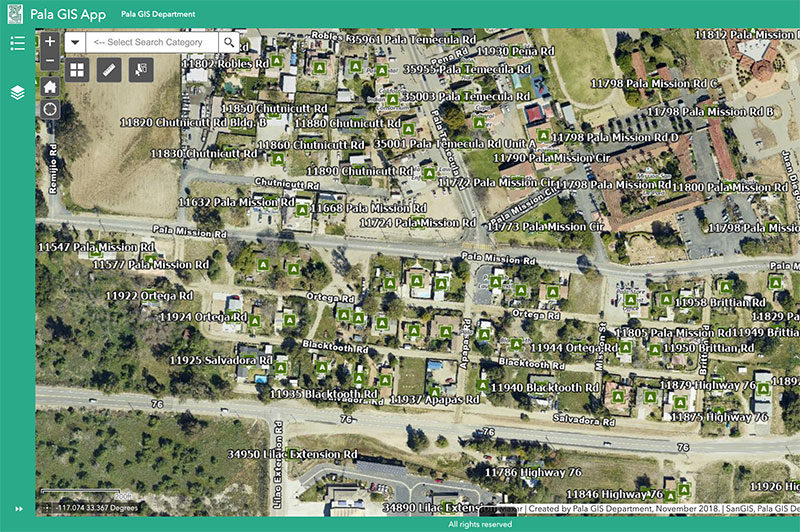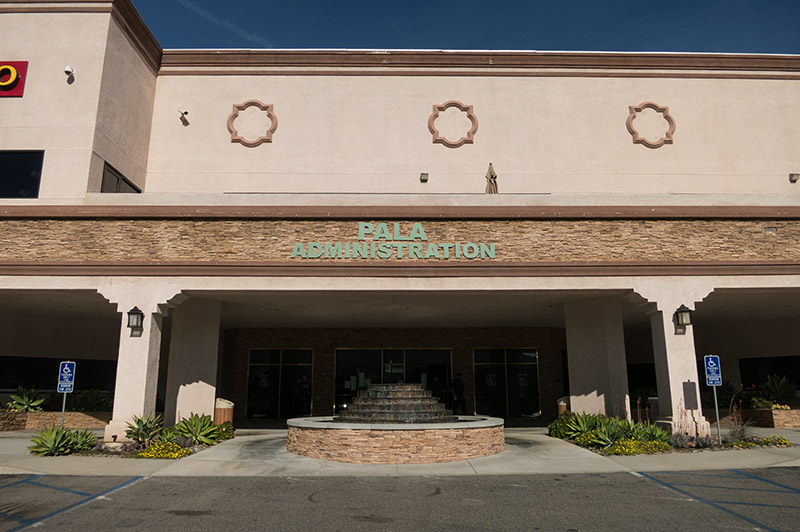Pala GIS Department Hours
Monday – 8:00 a.m. to 4:00 p.m.
Tuesday – 8:00 a.m. to 4:00 p.m.
Wednesday – 8:00 a.m. to 4:00 p.m.
Thursday – 8:00 a.m. to 4:00 p.m.
Friday – 8:00 a.m. to 4:00 p.m.
Saturday – Closed
Sunday – Closed
Pala GIS Department General Information
The Pala GIS Department provides mapping and GIS services to Pala’s Tribal Departments and Community Members. Services include Cartography (map-making), GPS data collection/staking, GIS data creation, data stewardship, data analysis, physical addressing and E911 coordination with the Pala Fire Department and NorComm regional dispatch.
Pala’s GIS Web Map and Portal
GIS Web Map

General information about Pala can be found on the GIS Web Map (no login required).
Pala GIS Portal

Pala’s GIS Data and other web maps can be viewed through the Pala GIS Portal (GIS Portal login is required). *If you do not have a login, please contact Matthew Deveney, GIS Specialist at (760) 891-3512, and one can be set up for you.
GIS Department Services
The Pala GIS Department offers physical addressing verification/assignment and maps of land or maps of Pala services for Community Members. Fees may apply.
Physical Addressing Verification/Assignment
If you do not currently know your physical address, contact the Pala GIS Department.
If you need a new address assigned (please verify with the GIS Department first), fill out the New Physical Address Request Form.
Maps of Land, Maps of Pala, etc.
Please fill out the Pala GIS Map Request Form and see the price list and available sizes.
Services for Tribal Departments
The Pala GIS Department provides services to tribal departments, including map creation, mapping of homes, utilities, roads, vegetation, land use, aerial photography, and GPS data collection.
Example of a Property Map









